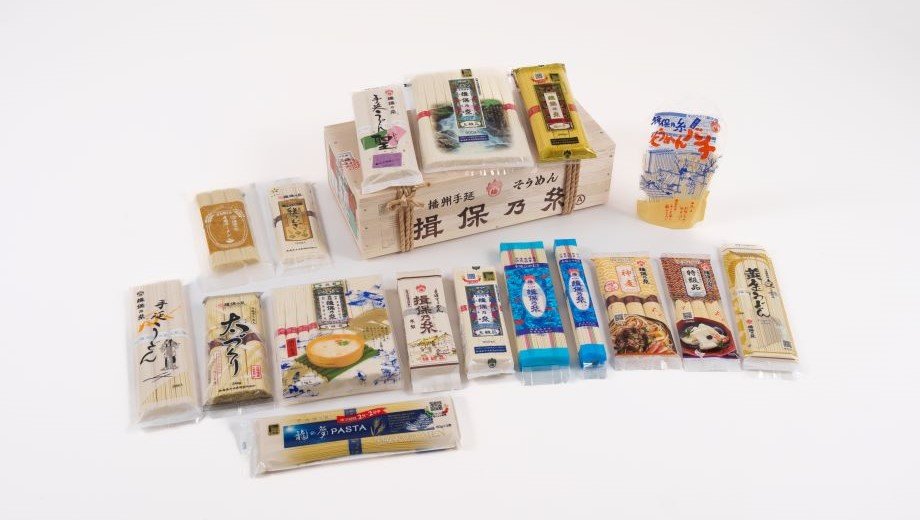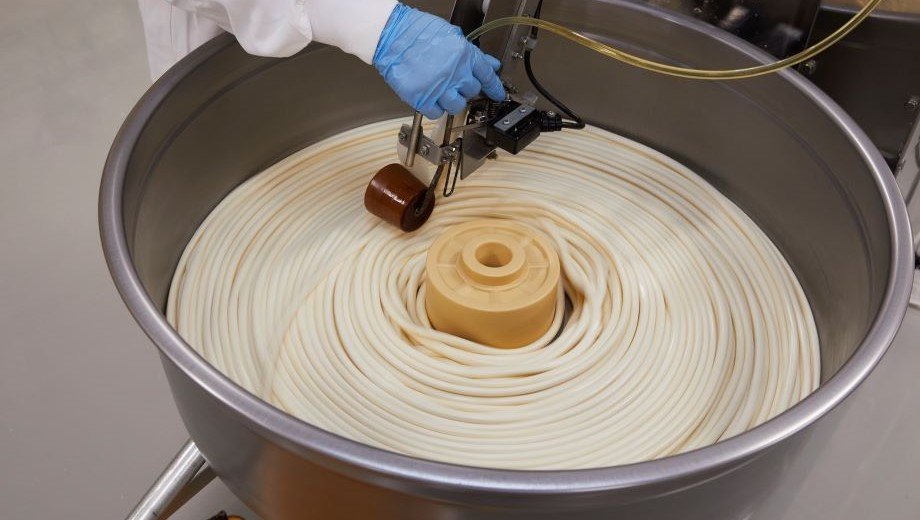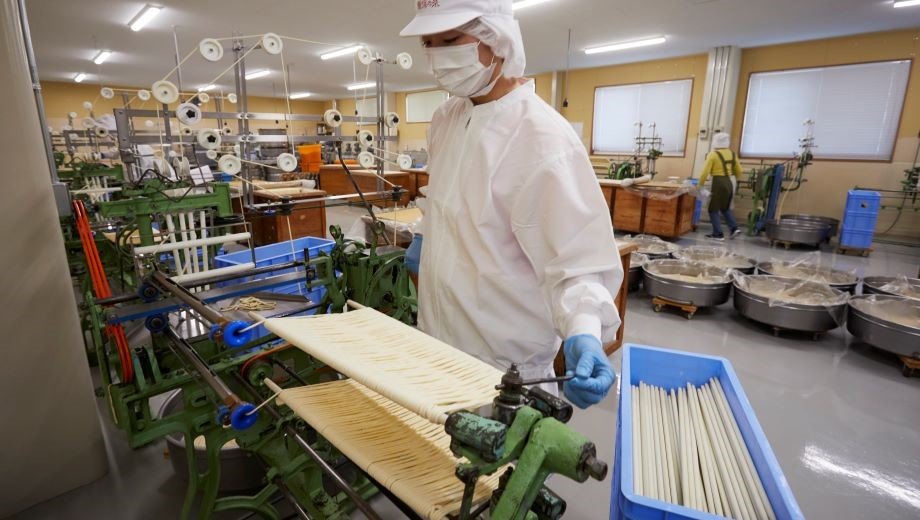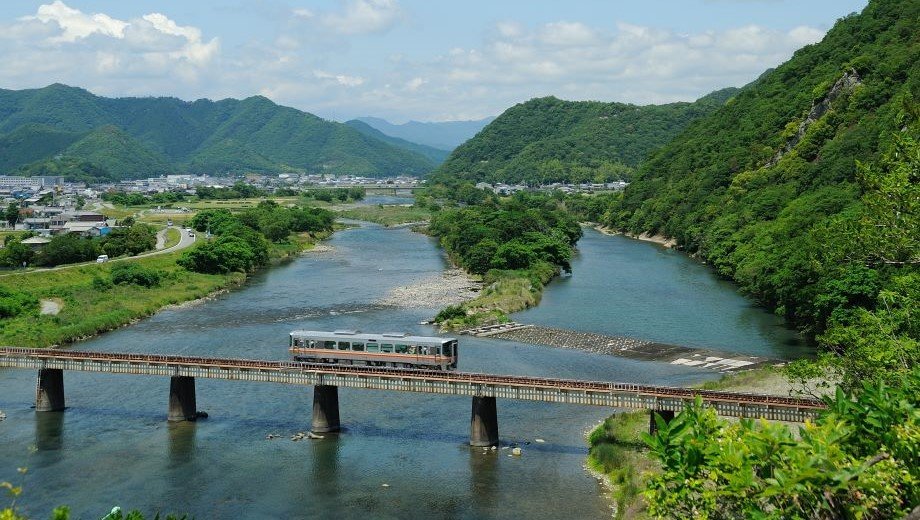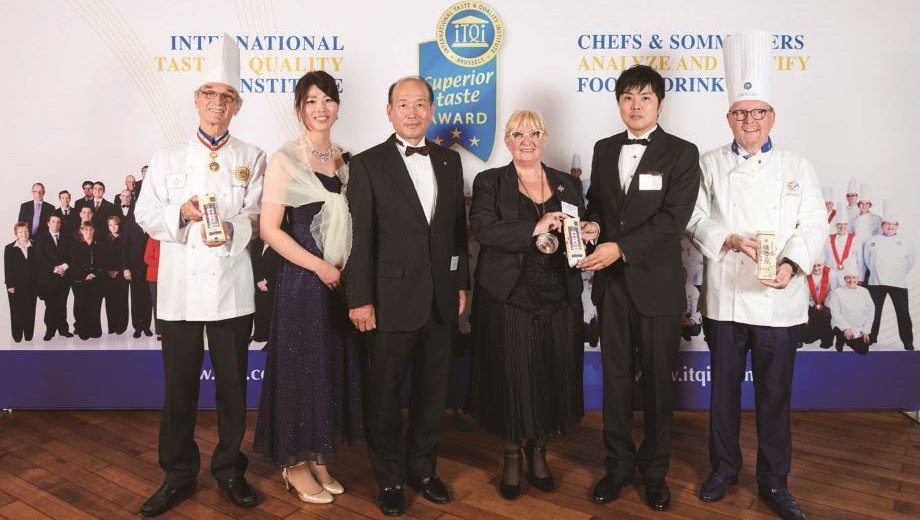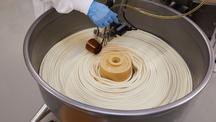IBONOITO
| Registration Number | 154 |
|---|---|
| Name of the GI | IBONOITO |
| Class | Processed Foodstuffs |
| Date of Protection | 2024/08/27 |
| Producing Area | Hyogo Prefecture |
| Applicant - Name and Address | Hyogo Prefecture Tenobe Somen Cooperative Association |
"IBONOITO" noodles are produced using traditional methods that have been passed on in the Harima region for about 600 years.
Characteristics of the noodles are that they retain their shape when boiled, they feel smooth on the tongue, and they have a chewy and crispy texture. They are highly recognized as refined products, boasting the top production of Tenobe (hand-stretched) somen (1) noodles in Japan.
The raw materials and additional resources used for "IBONOITO" are required to meet the "Purchased raw materials standards" and "Additional resources standards" managed by the Hyogo Prefecture Tenobe Somen Cooperative Association (hereinafter referred to as "Association").
The noodles are produced by the Association members using only raw materials supplied by the Association and following the "Production guidelines" of each product. The noodles then need to pass a grading test by an inspector and have an emblem and inspection certificate attached.
The noodles are then matured and stored in an exclusive warehouse of the Association.
The producing area was blessed with fertile soil used for farming along the Ibogawa River (2). Cultivation of wheat, the raw material for the noodles, and wheat flour production with water mills had been actively performed. Because salt is easily available from the nearby Banshu-Ako area, people have produced somen noodles since early times. In the producing area, the taste and texture of the noodles are improved by using the "hand-stretching technique", which involves repeatedly twisting the dough into a rope shape and stretching it, and a unique technique called "yaku", which consists in maturing the noodles in an exclusive warehouse during the hot and humid rainy season.
A document mentions that somen noodles were already produced in the area in the Muromachi period (3). At the time, the noodles were eaten only in temples and the imperial court. During the Edo period (4), somen noodles spread also to the ordinary people, and production by regional farmers increased. According to records from those times, somen manufacturers in the producing area gathered and drew up agreements on quality, etc., demanding that violators pay penalties for contract breaches in order to strictly control the quality of the noodles.
In 1894, a system of somen production standards inspection based on grading was introduced to unify quality and enhance reliability. The unified brand of "IBONOITO", named after the Ibogawa River flowing in the area, was also implemented to unite somen products sold under different names by individual manufacturers and merchants.
Since 2006, events have been held in Hawaii, to present recipes for "IBONOITO" noodles. In the following year, activities to promote sales started in Los Angeles and New York in the US , Southeast Asia, and the EU, resulting in increased recognition.
- Tenobe somen noodles, which are hand-stretched, are made by kneading wheat flour with salt water. Vegetable oil is applied to the dough, which is then stretched into thin strings while being twisted and dried . According to the Food Labeling Standards, those thinner than 1.7 mm along the longer diameter can be labeled as tenobe somen. These delicate, pure white noodles are typically boiled, cooled in cold water, and served with a dipping sauce. Enjoyed as a popular seasonal tradition during the summer in Japan, somen can also be served in winter as a hot soup called "nyumen." Thus, somen is an important part of Japanese food culture.
- Ibogawa River is a Class A river (67 km) that originates in Shiso City, Hyogo Prefecture and flows through Tatsuno City and Himeji City into the Sea of Harimanada.
- The Muromachi period is a division in Japanese history running from 1336 to 1573. It began when Ashikaga Takuji established the shogunate in Muromachi, Kyoto, and continued for about 240 years until the 15th shogun, Ashikaga Yoshiaki, was driven out of Kyoto by Oda Nobunaga.
- The Edo Period: 1603-1867. It is a period of Japanese history characterized by the establishment of a shogunate (feudal military government) in Edo (now Tokyo). Political administration under the Tokugawa clan began when Tokugawa Ieyasu became the era's first shogun.
